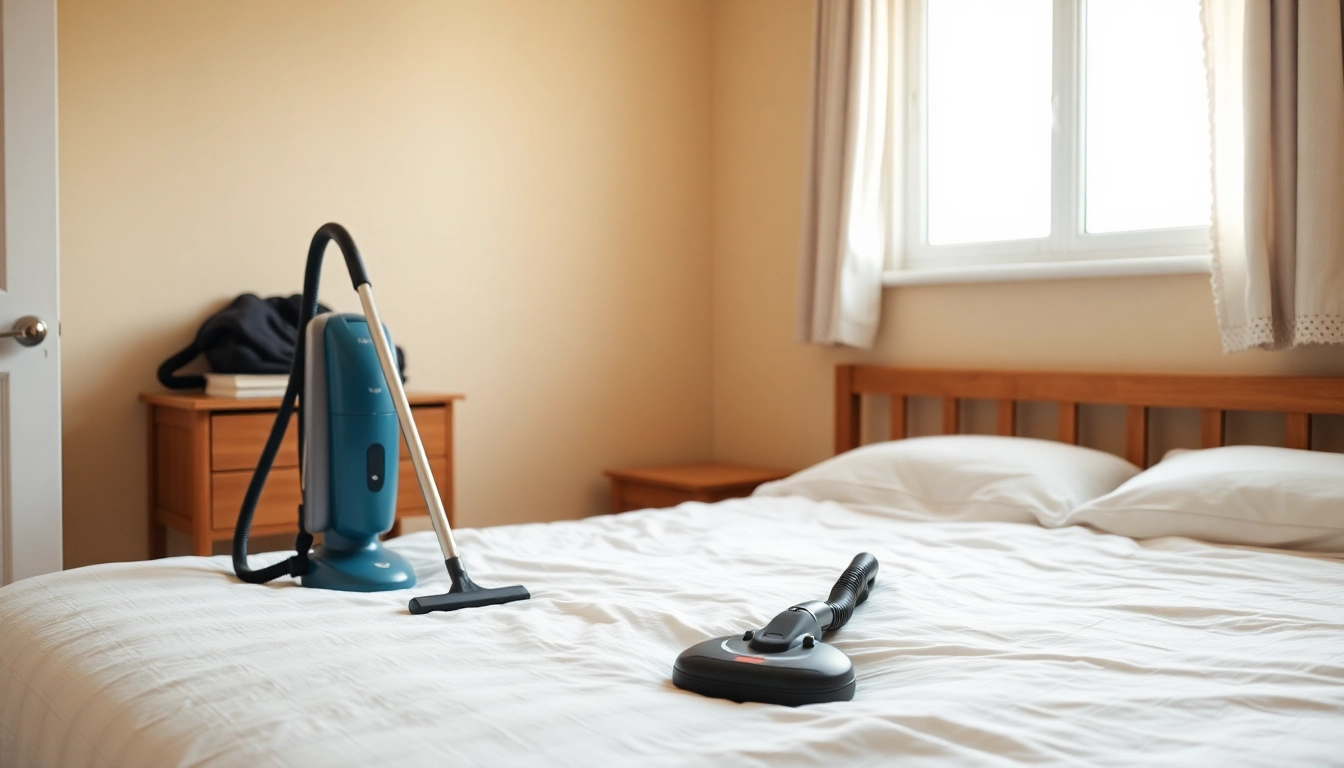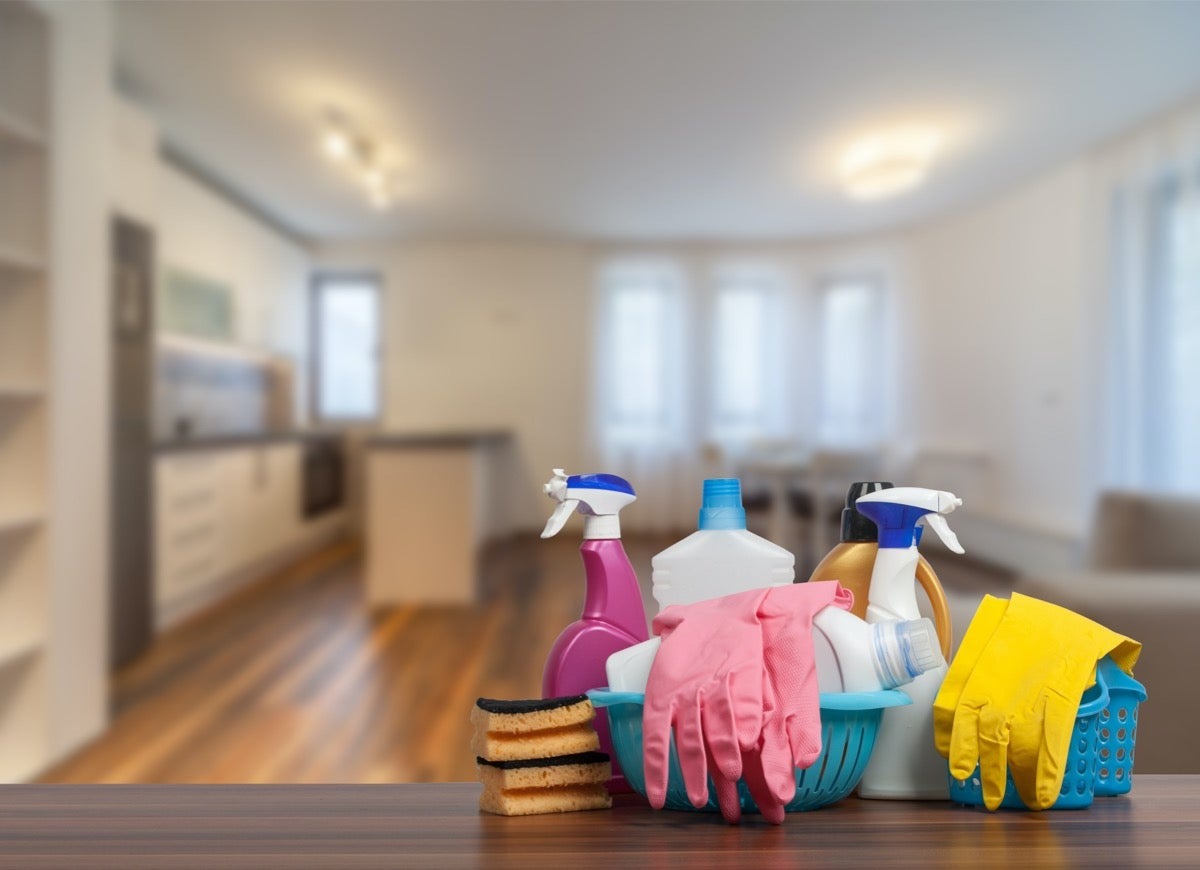Understanding Bed Bugs: An Overview
What are Bed Bugs?
Bed bugs, scientifically known as Cimex lectularius, are small, wingless insects that feed on the blood of humans and animals. Their size typically ranges from 1 to 5 millimeters, and they are reddish-brown in color. Despite their unassuming appearance, bed bugs are notorious for their resilience and ability to reproduce quickly, leading to significant infestations if not addressed promptly. They tend to be most active at night and are often found in beds, mattresses, and other areas where humans sleep. Understanding these pests is crucial for effective bed bug control strategies.
Signs of Infestation
Identifying a bed bug infestation early is vital to effective control. Common signs include:
- Blood stains: Small red or brown spots on your sheets or mattress may indicate that bed bugs have been feeding.
- Dark spots: Fecal spots, which are tiny black or reddish-brown specks, can often be found on bedding or the edges of mattresses.
- Egg casings: These tiny, pale yellow shells are often found in hiding spots and indicate a breeding population.
- Live insects: The most definitive sign, spotting actual bed bugs during the day, particularly in hiding spots.
The Life Cycle of Bed Bugs
The life cycle of a bed bug includes several stages: egg, nymph, and adult. Female bed bugs can lay up to 500 eggs in their lifetime, with the eggs hatching in about a week. After hatching, nymphs go through five molts before reaching adulthood, which can take a month or longer depending on the environment and availability of blood meals. This rapid life cycle contributes to the difficulty of controlling bed bug populations, making early detection and decisive action essential.
Effective Bed Bug Control Methods
Pest Management Techniques
Effective bed bug control requires a comprehensive integrated pest management (IPM) approach, combining multiple strategies to eliminate infestations:
- Inspection: Before any treatment, thorough inspections are necessary. Look for signs of bed bugs in mattresses, bed frames, furniture, and even cracks in walls or floors.
- Cleaning: Washing bed linens, clothing, and curtains in hot water helps eliminate bed bugs and eggs. Vacuuming infested areas is also crucial; however, ensure vacuum bags are sealed and disposed of properly to avoid reinfestation.
- Heat treatment: Bed bugs cannot survive temperatures over 120°F (49°C). Professional exterminators often use heat treatment in conjunction with other methods to eliminate all life stages of bed bugs effectively.
- Encasement: Placing mattress and box spring encasements can trap any bed bugs inside and prevent new ones from entering.
Chemical vs. Non-Chemical Treatments
When it comes to bed bug control, both chemical and non-chemical treatments have their role. Chemical treatments often utilize insecticides that are specifically labeled for bed bugs. While these can be effective when used properly, they should be part of a broader strategy that includes:
- Non-chemical options: Such as heat treatment, cold treatment (exposing bed bugs to temperatures below freezing), and thorough cleaning.
- Monitoring: After treatment, it’s vital to monitor areas using bed bug traps to catch any remaining bugs.
- Professional evaluation: Seeking the expertise of licensed pest control professionals who can provide insights into the most effective combinations of treatments.
DIY Bed Bug Control Tips
For those who prefer tackling bed bugs without professional help, several do-it-yourself strategies can help manage and control infestations:
- Use of steam: High-temperature steam can effectively kill bed bugs upon contact in areas that are hard to reach.
- Alcohol sprays: Household alcohol sprays can kill bed bugs on contact, but they are not a long-term solution.
- Essential oils: Some essential oils like tea tree or lavender show insecticidal properties; however, always test these in small areas before widespread application.
Preventing Bed Bug Infestations
Cleaning and Maintenance Practices
Consistent cleaning and maintenance practices are fundamental in preventing potentially catastrophic bed bug infestations:
- Regular washing: Frequently washing bedding and vacuuming surfaces can eliminate the likelihood of bed bug survival.
- Decluttering: Minimizing clutter provides fewer hiding places for bed bugs and makes inspections easier.
- Proper luggage handling: After traveling, inspect and clean your luggage thoroughly before bringing it into your home.
Travel Tips to Avoid Bed Bugs
Traveling increases the risk of bringing bed bugs home. To avoid infestations while traveling:
- Check hotel rooms: Inspect the bed and surrounding areas for signs of bed bugs upon arrival.
- Keep luggage elevated: Place luggage on luggage racks instead of the bed or floor.
- Seal clothing: Use plastic bags or sealable containers to store clothing during travel.
Home Remedies for Prevention
There are various home remedies to help prevent bed bug infestations, although effectiveness can vary:
- Using diatomaceous earth: This natural powder can be dusted in areas where bed bugs may reside. It acts by damaging their exoskeletons.
- Cinnamon or cedar oil: These natural repellents can deter bed bugs when applied in relevant areas.
Professional Help: When to Call an Exterminator
Identifying Reputable Services
Not every case of bed bug infestation can be tackled alone. Knowing when to call for professional help is crucial. Signs that you may need an exterminator include:
- Persistent presence: If bed bugs continue to reappear despite your best efforts at controlling them.
- Widespread infestation: Larger infestations require professional methods and tools that are not available for personal use.
- Health concerns: If you or a family member has adverse reactions to bites or allergens.
Understanding Treatment Options
Professional pest control services offer various treatment options, including:
- Integrated Pest Management (IPM): A comprehensive approach that incorporates inspection, monitoring, and treatment to eliminate bed bugs safely and effectively.
- Chemical treatments: Applying approved insecticides that are effective against various life stages of bed bugs.
- Heat treatments: Utilizing specialized equipment to raise the temperature in infested areas, killing bed bugs effectively.
Cost Considerations for Bed Bug Control
The cost of bed bug control can vary greatly depending on several factors:
- Size of infestation: Larger infestations typically require more extensive treatments, increasing overall costs.
- Type of treatment: Heat treatments may have different price points compared to chemical treatments.
- Location: Costs may vary by geographic area and local pest control company pricing.
Frequently Asked Questions about Bed Bug Control
How Fast Can I Get Rid of Bed Bugs?
The timeline for eliminating bed bugs can vary significantly based on the extent of the infestation and the methods applied. Typically, exterminators may promise relief within a few treatments over several weeks, but homeowners can expect varying timelines based on diligence in following preventive measures.
Are Home Treatments Effective?
Home treatments can be effective, particularly in the early stages of infestation. However, thorough cleaning, consistent vacuuming, and adherence to treatment recommendations play critical roles in their success. It’s often best to combine home treatments with professional advice for optimal results.
Long-Term Prevention Strategies
To prevent future infestations, maintain good hygiene, conduct regular inspections, and inform guests of bed bug awareness. Moreover, routinely inspect and clean your home as part of your regular housekeeping regime to minimize the chance of a resurgence.















Leave a Reply